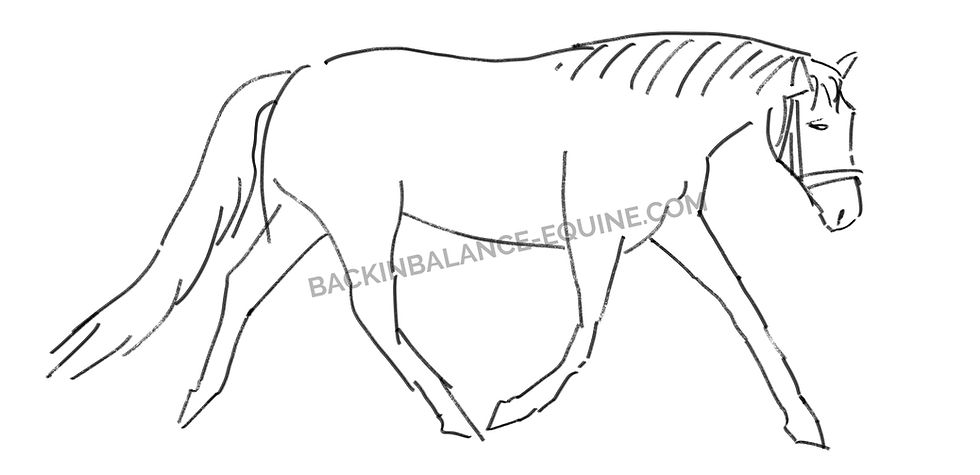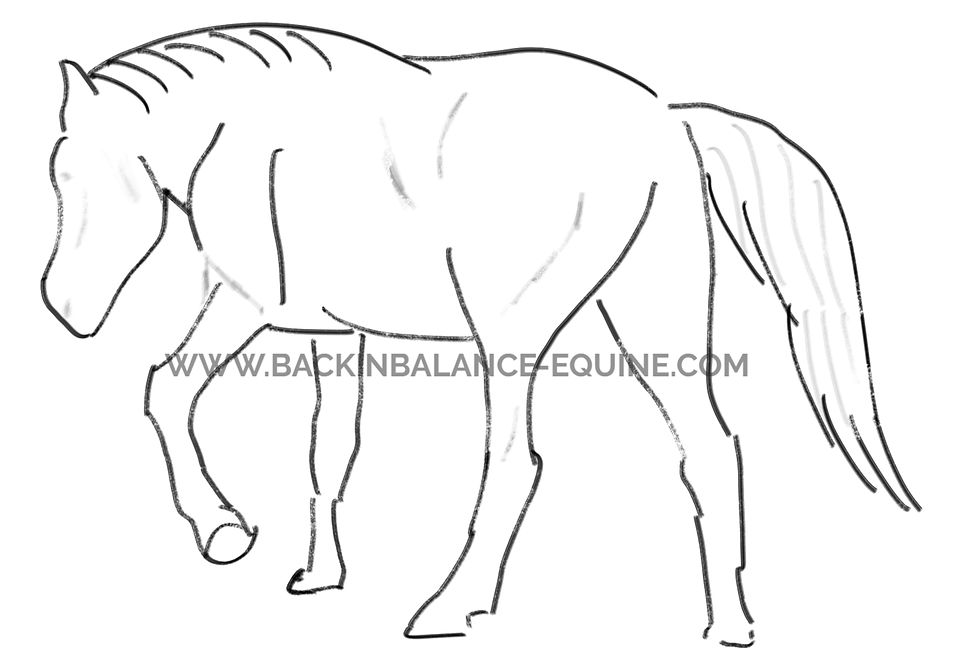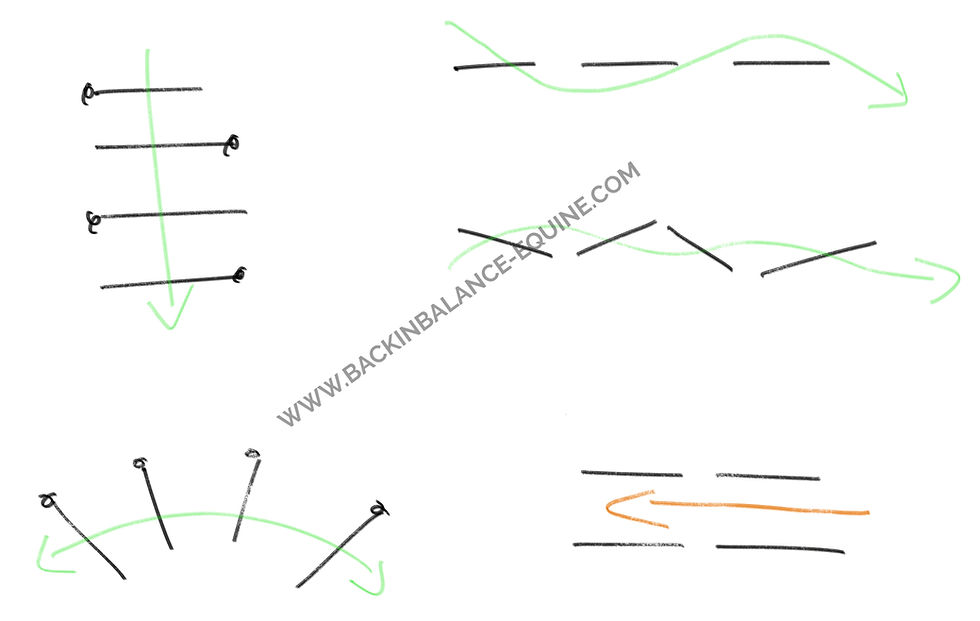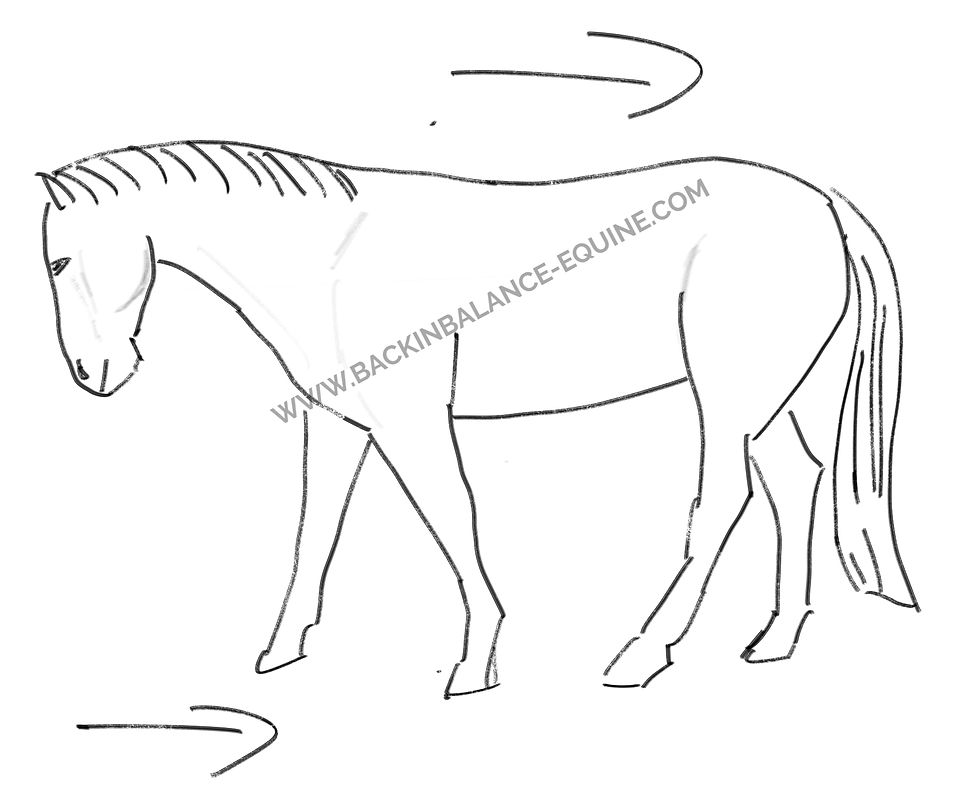A Horse Owner’s Guide to the Top 10 Exercises for Building Topline
- Academy Team
- Sep 2
- 2 min read
Updated: Sep 3
Building topline isn’t about quick fixes or gadgets — it’s about correct, progressive work that strengthens the muscles along your horse’s back, neck, hindquarters and core. Here are 10 effective, research-informed exercises to support your horse’s posture, strength and comfort.
1. Forward, Down and Out Work
Encouraging your horse to stretch forward and down while moving actively from behind lifts the back and engages the topline.📖 Research has shown that long and low work increases back muscle activity compared to hollow outlines (Rhodin et al., 2009).

2. Hill Work (Walking & Trotting Uphill)
Walking and trotting uphill naturally recruits the hindquarters, building the muscles that support the topline. Carefully controlled downhill work also improves coordination and balance.

3. Slow Walking on Inclines
Slow, deliberate walking up and down hills increases stability, joint mobility, and core strength. This is especially beneficial for horses in rehab or needing controlled strengthening.
4. Raised Pole Exercises
Walking or trotting over poles stimulates abdominal lift, stride control, and topline engagement.📖 Egenvall et al. (2017) demonstrated that raised polework increases limb flexion and topline muscle activity.

5. Transitions
Frequent, correct transitions (both between and within gaits) encourage engagement from behind and activation of the abdominal muscles. They also improve balance and self-carriage.
6. Rein-Back (In-Hand and Under Saddle)
Reversing correctly in a straight line requires the horse to engage the core and hindquarters.
Start with a few deliberate steps.
Progress to rein-back up a slight incline for increased strength.📖 Rein-back has been shown to activate abdominal and thoracic sling muscles (Gómez Álvarez et al., 2006).

7. In-Hand Lateral Work
Gentle lateral movements in-hand (shoulder-in, leg-yield) encourage suppleness and correct postural muscle activation. This also improves communication and proprioception without the weight of a rider.
8. Stretching (Without Carrots)
Stretches should be done after exercise, when the horse is warm:
Neck flexions: guiding the nose gently towards the girth or hip.
Lateral stretches: guiding the nose gently side-to-side.
Neck extension: asking the horse to stretch forward and down.⚠️ Avoid baiting with carrots; instead, gently guide the horse to ensure controlled, symmetrical stretches.
9. Mobilisation Exercises
Simple mobilisations activate postural muscles and improve flexibility:
Belly lifts: run a hand along the midline to encourage core lift.
Pelvic tucks: apply gentle pressure to the side of the tail head to engage the lumbosacral area. These are excellent for rehabilitation and general conditioning.
10. Active Rest & Recovery
True muscle building happens during rest. Allowing adequate turnout, variety of movement, and days off between intense work prevents fatigue and promotes adaptation.
Avoid the Gadgets
Draw reins, side reins and restrictive devices often create a false outline by forcing the head and neck into position. True topline comes from correct biomechanics, not shortcuts.
Takeaway
Topline development requires patience, consistency, and a holistic approach. By combining correct training, in-hand work, stretching, and manual therapy you’ll build not only your horse’s posture but also long-term soundness and comfort.
👉 Book a Back in Balance session today to support your horse’s topline with expert manual therapy, rehabilitation planning, and saddle fitting.

%20(1).png)



Comments